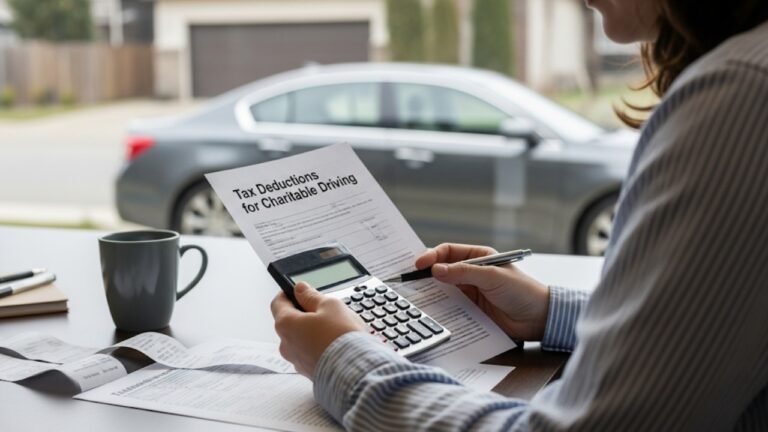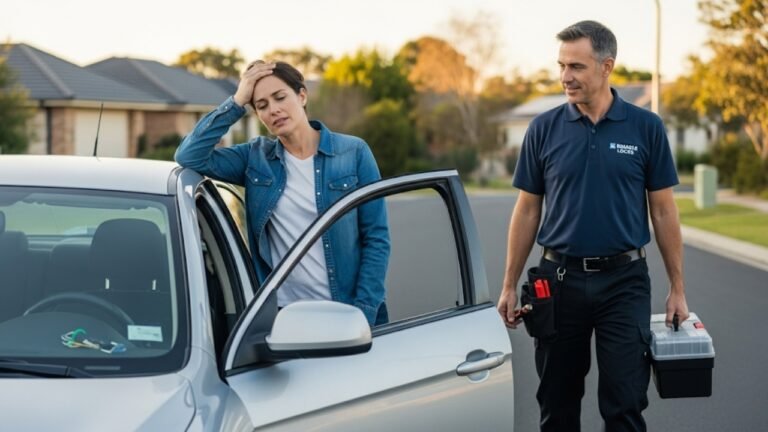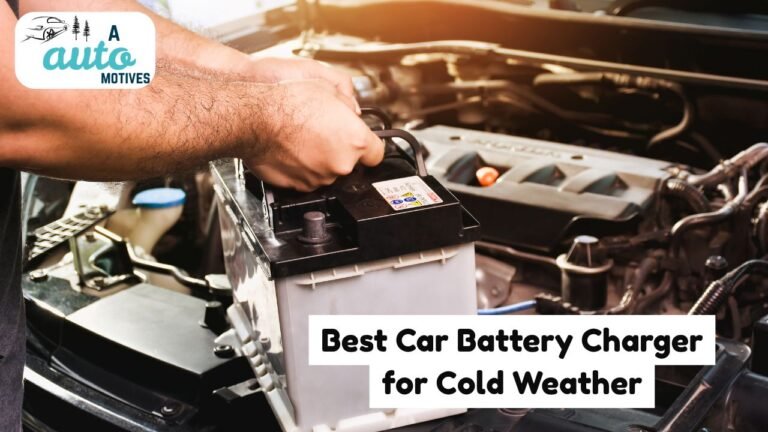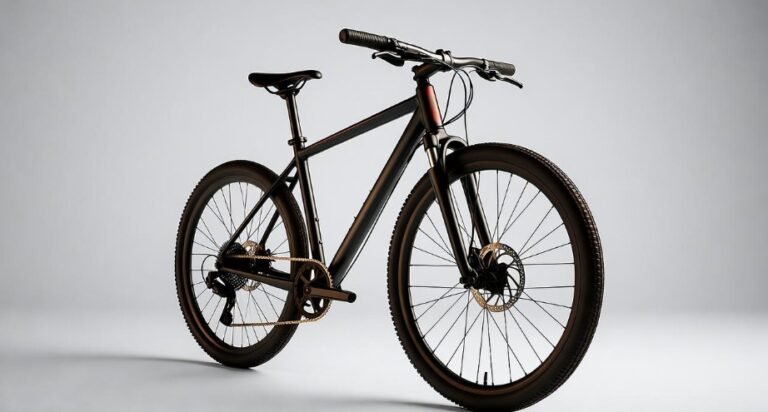Harley Davidson Fluid Capacity Chart: Essential Guide for Every Rider

Owning a Harley Davidson isn’t just about cruising down highways with the wind against your face—it’s about understanding the heartbeat of your machine. And that heartbeat depends on something simple yet essential: fluids. Whether it’s the oil coursing through the engine or the transmission fluid ensuring smooth gear shifts, every drop plays a crucial role. That’s where the Harley Davidson Fluid Capacity Chart comes in. It’s not just a maintenance sheet—it’s your roadmap to keeping your bike running like new.
Let’s break it down in a way that feels real, practical, and easy to follow—like chatting with a fellow Harley enthusiast who knows the ins and outs from years of riding.
In This Article
- 1 Understanding the Importance of Harley Davidson Fluid Maintenance
- 2 Why the Harley Davidson Fluid Capacity Chart Matters
- 3 The Core Fluids That Keep Your Harley Alive
- 4 Creating and Using Your Own Harley Davidson Fluid Capacity Chart
- 5 Best Practices for Managing Harley Fluids
- 6 Troubleshooting Fluid-Related Issues in Your Harley Davidson
- 7 Environmental Responsibility: Disposing of Used Fluids the Right Way
- 8 Eco-Friendly Alternatives for Harley Owners
- 9 Maintaining Longevity Through Routine Checks
- 10 Pro Tips for New Harley Riders
- 11 Frequently Asked Questions (FAQs)
- 12 Conclusion: Ride Smooth, Ride Smart
Understanding the Importance of Harley Davidson Fluid Maintenance

Think of your Harley like a living being—it needs nourishment to perform at its best. That nourishment comes from its various fluids. Many new owners assume oil changes are enough, but in truth, your Harley depends on engine oil, transmission fluid, primary chaincase oil, brake fluid, and sometimes coolant.
These fluids do much more than lubricate; they protect. The fluid capacity chart helps you measure exactly how much of each type is needed—too little can lead to wear and tear, while too much can cause pressure issues. Harley Davidson didn’t design this system randomly; every fluid capacity is calculated to keep the engine balanced and efficient.
When you maintain correct fluid levels:
-
You prevent overheating and friction damage.
-
You ensure smoother gear transitions.
-
You extend the life of critical engine components.
-
You save money by preventing early mechanical failures.
Riders often compare this process to feeding your bike the right diet—it’s not about how much, but how precisely you do it.
Why the Harley Davidson Fluid Capacity Chart Matters
Let’s face it—Harleys are not ordinary bikes. Each model has its own “personality.” A Sportster doesn’t consume the same fluid volumes as a Softail or Touring model. That’s where the Harley Davidson Fluid Capacity Chart becomes your best friend.
This chart isn’t just numbers on a page—it’s your guide to maintaining that perfect mechanical balance. For example, a slight overfill of transmission oil can make your clutch feel sticky, while underfilling it might cause grinding noises when shifting.
Here’s why keeping this chart handy makes a world of difference:
-
It helps avoid guessing during fluid changes.
-
It ensures consistent performance across miles.
-
It gives you peace of mind knowing your Harley’s fluids are spot-on.
Think of it like your Harley’s diet plan—every fluid has a “meal portion,” and the chart tells you exactly how much to serve.
The Core Fluids That Keep Your Harley Alive
Every Harley depends on a specific set of fluids to function properly. Let’s explore what each one does and why you should never underestimate its importance.
1. Engine Oil – The Lifeblood of Your Harley
Your engine oil is the real MVP here. It’s what keeps every moving part in the engine smooth and cool. Without the right amount, your bike’s engine can overheat, seize, or wear out prematurely.
There are three main types of oil you might use:
-
Conventional Oil – Great for short rides and older models but needs more frequent changes.
-
Synthetic Oil – Offers superior protection, ideal for high-performance or long rides.
-
Blended Oil – A mix of both worlds; balanced performance at a reasonable price.
Choosing the correct viscosity matters just as much. Here’s a quick look:
| Model | Recommended Oil Viscosity |
|---|---|
| Sportster | 10W-40 |
| Softail | 20W-50 |
| Touring | 20W-50 |
Changing your oil every 5,000 miles (or sooner if you ride aggressively) ensures your engine stays clean and responsive.
2. Transmission Fluid – The Silent Hero
Your transmission fluid may not get the attention engine oil does, but it plays a silent, crucial role. It keeps your gears gliding smoothly like butter on a hot skillet. Without it, you’ll hear grinding sounds and feel the gear shift resistance increase over time.
Signs that your transmission fluid needs attention include:
-
Difficulty shifting gears.
-
Burnt smell or darkened fluid.
-
Strange noises from the transmission case.
Transmission fluid doesn’t just lubricate—it also helps cool down the gearbox and prevent corrosion. You’ll usually find that 1 to 1.5 quarts is enough depending on your Harley model. Replacing it every 10,000 miles keeps your gears in top form.
Pro tip? Always warm up your engine before checking or changing your transmission fluid—it helps you get an accurate reading.
3. Primary Chaincase Fluid – The Link Between Power and Motion
Your Harley’s primary chaincase is like the middleman between your engine and transmission—it’s where power gets transferred to your rear wheel. This system needs fluid to keep the primary chain and clutch assembly well-lubricated and heat-free.
Here’s the thing: ignoring this fluid can cause your clutch plates to slip or drag, which can make your ride feel jerky and inconsistent. The good news? Maintaining it is straightforward.
-
Change every 5,000 miles.
-
Check for leaks near the clutch inspection cover.
-
Use Harley-approved primary chaincase lubricant for best results.
Most models take around 1 quart of primary fluid, but always verify in your Harley Davidson Fluid Capacity Chart before pouring. A small mistake in volume here can make your clutch behave unpredictably.
4. Brake Fluid – The Safety Shield
If there’s one fluid you should never ignore, it’s your brake fluid. It’s the invisible force that gives you stopping power when you squeeze the lever. But it’s also one of the most commonly neglected fluids among riders.
Brake fluid comes in different DOT ratings:
-
DOT 3 – Standard for most motorcycles.
-
DOT 4 – Higher boiling point, better for performance riding.
-
DOT 5 – Silicone-based and non-absorbent, used in select Harley models.
Dirty or old brake fluid can cause a “spongy” feel in your brake lever—a warning sign that moisture has contaminated the system. To stay safe, change your brake fluid every 2 years, or sooner if you ride often in humid or rainy conditions.
| Brake Fluid Type | Change Interval |
|---|---|
| DOT 3 | Every 2 years |
| DOT 4 | Every 2 years |
| DOT 5 | As needed |
Brakes are your last line of defense—keep them sharp, and they’ll never let you down.
5. Coolant – The Temperature Regulator
Not all Harley models use coolant, but if you own a liquid-cooled Harley, this one’s vital. Coolant helps regulate your bike’s temperature, ensuring it doesn’t overheat on long rides or in heavy traffic.
There are different types:
-
Ethylene Glycol Coolant – Best for colder climates.
-
Propylene Glycol Coolant – Safer and more environmentally friendly.
-
HOAT Coolant – Long-lasting hybrid coolant offering corrosion protection.
Coolant should be replaced every 2 to 5 years, depending on the type you use. Always top it up when low and inspect hoses for leaks regularly. Riding with low coolant can cause serious engine damage, especially in high-performance Harley engines.
6. Fork Oil – The Unsung Hero of Comfort
If your Harley feels rough over bumps or the front dives too much during braking, your fork oil might be the culprit. Fork oil cushions the impact between your tire and the road, ensuring a smooth, stable ride.
Over time, it loses viscosity and collects debris, reducing suspension efficiency. Watch for these signs:
-
Leaks around fork seals.
-
A “bouncy” or uneven front end.
-
Reduced control during cornering.
Fork oil should be replaced roughly every 20,000 miles, depending on riding conditions. Though often overlooked, fresh fork oil transforms how your bike handles—making it glide instead of jolt.
Creating and Using Your Own Harley Davidson Fluid Capacity Chart
A smart Harley owner doesn’t just rely on memory. Keeping your own fluid capacity chart is the best way to track when and how much to refill. This personalized record helps avoid overfilling or skipping changes.
Here’s an example layout you can keep in your garage or phone notes:
| Fluid Type | Capacity (quarts) | Change Interval |
|---|---|---|
| Engine Oil | 3.5 | Every 5,000 miles |
| Transmission Oil | 1.0–1.5 | Every 10,000 miles |
| Primary Fluid | 1.0 | Every 5,000 miles |
| Brake Fluid | 0.5 | Every 2 years |
| Coolant | 2.0 | Every 2–5 years |
Keep this chart updated after each service. Some riders even laminate it and stick it near their workbench—it’s that useful.
Best Practices for Managing Harley Fluids
Whether you’re a DIY rider or prefer visiting your local Harley shop, following a few best practices can make all the difference.
DIY Tips for Riders:
-
Always work on a level surface.
-
Warm up your bike slightly before draining fluids—it helps them flow better.
-
Use funnels and clean containers to prevent spills.
-
Label bottles and store leftovers properly.
Pro-Level Advice:
If something feels off—strange noises, slipping gears, overheating—consult a Harley-certified mechanic. They can test fluid pressure, check seals, and flush systems professionally.
Maintaining your Harley is part of the joy of ownership—it’s like caring for a loyal horse that’s carried you through countless adventures. A little time spent now keeps the bond strong for years.
Troubleshooting Fluid-Related Issues in Your Harley Davidson
Even with careful maintenance, every Harley owner eventually faces a few bumps in the road—sometimes literally, sometimes mechanical. Many of these hiccups stem from fluid-related issues. Knowing how to recognize and fix them early can save you from bigger, more expensive problems later.
Common Fluid Problems You Might Encounter
Here’s the truth—your Harley communicates with you. If it’s unhappy with something, it’ll show signs. The trick is knowing how to read them.
-
Oil Leaks: If you notice dark spots under your parked bike, that’s oil escaping. It could be from a worn gasket or an overfilled tank.
-
Grinding or Clunking Sounds: Often, this points to low transmission fluid. It’s like your gears are crying for lubrication.
-
Spongy Brake Lever: This usually means there’s air or moisture in the brake lines—time for a brake fluid flush.
-
Overheating: Low coolant or old engine oil can’t regulate heat efficiently. The result? A bike that runs hotter than usual.
-
Clutch Slippage: Too little or degraded primary fluid can cause clutch issues, making it harder to engage gears.
Riders often make the mistake of topping up without checking capacity. That can make matters worse. The Harley Davidson Fluid Capacity Chart gives you the right numbers—use it as your truth compass.
When to Seek Expert Help
Sometimes, even the most experienced DIY rider needs a professional hand. Certain signs should never be ignored, as they often indicate deeper mechanical problems.
You should visit a Harley-certified mechanic if you notice:
-
Persistent leaks even after fluid changes.
-
Continuous overheating despite topping up fluids.
-
A burning smell coming from the transmission area.
-
Sudden drops in oil pressure on your dashboard indicator.
Mechanics use diagnostic tools to test for internal leaks, pressure loss, and component wear. It’s better to invest in a check-up now than face an engine rebuild later.
A quick comparison to remember:
| Problem | Possible Cause | Recommended Action |
|---|---|---|
| Low Oil Pressure | Oil too thin or low | Refill or switch to correct viscosity |
| Slipping Clutch | Low chaincase fluid | Drain and refill to correct level |
| Engine Overheating | Low coolant or old oil | Replace fluids immediately |
| Rough Gear Shifts | Low transmission fluid | Top off using chart reference |
Your Harley isn’t just a machine—it’s a finely tuned piece of engineering. Treat it with respect, and it’ll reward you with performance that lasts decades.
Environmental Responsibility: Disposing of Used Fluids the Right Way
Every rider loves the open road, the smell of asphalt, and the feeling of freedom. But freedom comes with responsibility—especially toward the environment. Used fluids from your Harley are toxic and can harm wildlife and water systems if disposed of carelessly.
Here’s how to do it right:
-
Engine Oil: Collect it in a sealed container and take it to a recycling center or auto shop. Many shops will recycle it for free.
-
Transmission and Chaincase Fluids: Never pour them down drains or soil. Drop them at a hazardous waste facility.
-
Coolant: Coolant contains chemicals that can harm pets and animals. Always store it safely and recycle it through an authorized service center.
-
Brake Fluid: Handle with gloves, as it can damage skin and paint. Dispose of it at a licensed recycling location.
Many Harley dealerships now promote eco-friendly maintenance programs, using biodegradable lubricants and low-toxicity coolants. It’s a small step that makes a big difference for the planet we all ride on.
Eco-Friendly Alternatives for Harley Owners
Harley riders are known for innovation and pride. That doesn’t stop at custom chrome—it extends to sustainability too. Choosing eco-friendly fluids not only helps the environment but can also enhance performance.
Here are some cleaner options worth considering:
-
Biodegradable Engine Oils: Made from renewable resources, they reduce emissions and break down naturally.
-
Recycled Coolants: These go through purification and work as effectively as new coolants.
-
Low-tox Brake Fluids: Formulated to minimize pollution during disposal.
-
Eco-Safe Transmission Fluids: Designed with reduced heavy metal content.
When you switch to greener fluids, you’re not sacrificing performance—you’re simply choosing a cleaner, smarter way to ride. It’s like shifting from regular gasoline to a premium blend that’s better for your bike and the planet.
Maintaining Longevity Through Routine Checks
Think of your Harley as your lifelong travel companion. To keep it faithful, you need to nurture it. Routine fluid checks are like regular doctor visits—they ensure everything’s functioning as it should.
Here’s a simple checklist you can follow every few weeks:
-
Inspect engine oil level and color. Replace if dark or gritty.
-
Check transmission oil for clarity. Cloudiness means contamination.
-
Ensure brake fluid isn’t below the “MIN” mark.
-
Monitor coolant for leaks and low levels.
-
Examine fork oil if the ride feels rough or the front suspension dips too much.
For serious riders who cover long distances, keeping a small notebook or phone reminder for fluid maintenance can make a huge difference. Consistency is key—because Harley engines love routine care.
Pro Tips for New Harley Riders
Owning a Harley is a badge of pride. But if you’re new to the world of these beasts, here are some insider tips to keep your machine in pristine shape:
-
Always use Harley-approved fluids. They’re designed for your bike’s unique system.
-
Don’t mix fluid types. Mixing, especially brake or coolant fluids, can cause chemical reactions and damage.
-
Warm up your bike before checking fluids. Fluids expand with heat—so checking cold can give inaccurate readings.
-
Invest in quality tools. A good funnel, torque wrench, and oil pan are your best allies.
-
Ride regularly. Idle bikes tend to develop condensation and sludge buildup.
Every Harley rider learns through experience. Over time, you’ll start recognizing your bike’s “moods.” It’ll hum differently when fluids are balanced—and growl when it’s time for service.
Frequently Asked Questions (FAQs)
1. How often should I check my Harley Davidson fluid levels?
Check all fluid levels every 1,000–1,500 miles or before long rides. Frequent checks prevent small issues from turning into costly repairs.
2. What happens if I overfill my engine oil?
Overfilling causes excess pressure, leading to oil leaks and foaming. Always fill only to the recommended capacity in your Harley Davidson Fluid Capacity Chart.
3. Can I use car oil in my Harley Davidson motorcycle?
Never. Car oils lack the additives required for motorcycle engines and can damage clutch systems and bearings.
4. What is the best type of coolant for Harley Davidson motorcycles?
For liquid-cooled models, use ethylene glycol-based or Harley-approved coolant. It provides optimal heat regulation and corrosion resistance.
5. How do I know when my transmission fluid needs changing?
If shifting feels rough, delayed, or noisy, it’s time to replace the fluid. Check your manual for the exact interval, typically around 10,000 miles.
6. Why is my clutch slipping even after changing fluids?
It could be due to worn clutch plates or incorrect fluid levels in the primary chaincase. Have a mechanic inspect it to avoid further damage.
7. Are synthetic oils better for Harley Davidson motorcycles?
Yes. Synthetic oils provide superior lubrication, better temperature control, and longer life compared to conventional oils.
8. How should I store fluids if I do my own maintenance?
Keep them sealed in a cool, dry place, away from direct sunlight. Always label bottles with type and date of purchase.
Conclusion: Ride Smooth, Ride Smart
At its core, the Harley Davidson Fluid Capacity Chart isn’t just a maintenance reference—it’s the secret code to your bike’s longevity. Every Harley has its rhythm, and the right fluids keep that rhythm alive.
When you ride, your Harley tells a story—of care, precision, and passion. And maintaining proper fluid levels is how you respect that story. It’s not just about performance; it’s about connection.






